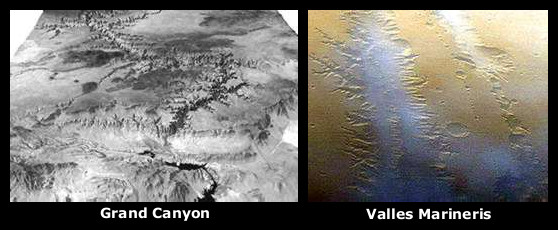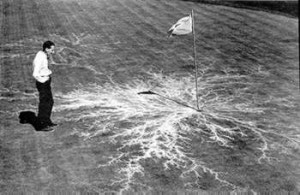well, since Circumspice has cried "uncle" I suppose there may be enough on this thread to understand what had occurred...
Thanks Tiompan, a very interesting post indeed...
Kalopin » Mon Dec 05, 2016 8:16 pm
http://www.ancient-origins.net/myths-le ... bes-005774
“They excelled every other nation which was flourished, either before or since, in all manner of cunning handicraft—were brave and warlike—ruling over the land they had wrested from its ancient possessors with a high and haughty hand. Compared with them the palefaces of the present day were pygmies, in both art and arms. …”
[...so, it's good to know that, at least you all understand that-...;-] ...any form of life that had existed during the Pleistocene, which was living anywhere beneath or near to the ejecta blanket strewn field would have been instantly incinerated [vaporized!]and that, approx. 13kya, the entire north American continent was basically sterilized [the impact spherules reached to over 2200*C] from a massive impact [the Moon to the Mediterranean...]
I have little doubt that many of the survivors understood much, if not all, of what had occurred and immediately set out to find anyone else who may have survived... [the reason there were "giants" in the Americas many thousands years ago...]
...and so, it would make sense to understand the YDB and to adjust dating accordingly? It appears [by studying satellite views,] that Beringia is well attached to the north American continent and that this may have been a land bridge after Asia and America made contact, during the Clovis period and that this was covered by ocean, as well as many other areas [the English channel...] when a comet struck the Hudson bay emptying out lake Agassiz... [as all this is written in the geography and recorded in sedimentary layers and ice core data...] So from about 12,980 years ago to around 10,500 years ago, it appears Beringia was slightly above water, but that there were many advanced civilizations who had known what had occurred...
[...digging a little deeper...;-]
You say that it's possible that there were white people in the new world BEFORE the current Native Americans.
Tell ya what... Show definitive proof.
Circ, I had just posted this in "Beringia"- viewtopic.php?f=9&t=3804
http://www.ancient-origins.net/myths-le ... bes-005774
25 April, 2016 - 14:57 ancient-origins
Ancient Race of White Giants Described in Native Legends From Many Tribes
...now, why would so many tribes describe these same people? No, I am not saying they are responsible for all the structures being discussed, or that any of the indigenous people would have been incapable, but the evidence is quite clear, with little debate- that there was a race of white "giants" on the north American continent long before "mainstream" gives credit...
[...and I think your jumps to conclusions and insults, many times, oversteps the boundaries of a civil conversation, especially accusations of "bigotry"...]
I believe you all will find this to be much more complex than to point to one scenario, but it is my belief that the first people to arrive in the "new world" were on a mission to find survivors from a great cataclysm that had incinerated and sterilized the entire north American continent approx. 13kya [YDB]
[...and was the result of the Moon impacting the Mediterranean sea...]
This is the story being told, once you dig a little deeper...
[...maybe should use a larger font? ;-]
Old Vermont
Postby Kalopin » Tue Dec 06, 2016 12:18 pm
Cognito wrote:
... it is my belief that the first people to arrive in the "new world" were on a mission to find survivors from a great cataclysm that had incinerated and sterilized the entire north American continent approx. 13kya [YDB]
[...and was the result of the Moon impacting the Mediterranean sea...]
Contradiction in terms; how can the first people to arrive be looking for survivors? By definition, the survivors would be the first people.
Regardless, if the entire North American continent was incinerated, why go there? Altruism? How did they know North America was incinerated? Internet? Besides, wouldn't your rescue mission originate from the Mediterranean area? Yet, the moon "impacted" that area at the same time? Just for fun, calculate the physical forces resulting from a moon impact ... it's called a total extinction event ... nothing left ... nothing.
You can't be serious ...

All I can tell you is to study every single detail. Please go over everything I have posted...
Yes, IF there were any survivors... They [the giants] were the first people after the YDB. [Surely you can understand that] if impact spherules covered over four continents and contained nanodiamonds that form at temps above 2200*C that such an extreme amount of heat would have instantly wiped out any form of life?
Do you see where I have discussed the formation of the Devil's tower and all the other mounainous anomalies throughout the southwest U.S.? The top of Devil's tower, along with all the plateaus is where the Moon scraped at the surface. So, when I say the rock "fell from the sky out of the ejecta blanket" for this moment, there really was no sky, as the Moon had "curled" the entire plate upward and the electrical discharge along with the Moon's much harder iron surface scraped along the tops of the molten rock, flattening the tops of all these structures. This was the formation process for all these features and is the explanation for why the tops are so perfectly flat...
I will continue to ask for any other logical explanation. As you continue to believe in phaulty fysics and skewed dating processes, go ahead and add in all the tangible evidence. Look at the satellite views, study the geography, impactites, historical accounts,... Understand there are pyramids, that were built on top of Chicxulub, buried beneath limestone. This same limestone is what formed the Ozarks and was ejected from beneath the Mediterranean sea...
It really is quite simple, once this has been looked at from this angle. Where else would all this limestone have come from?
[...and so, these, [very intelligent and highly advanced, beyond our current knowledge,] people went out to find the loved ones they knew..., why, what would you do?...]
...
 [-profile]
[-profile]

